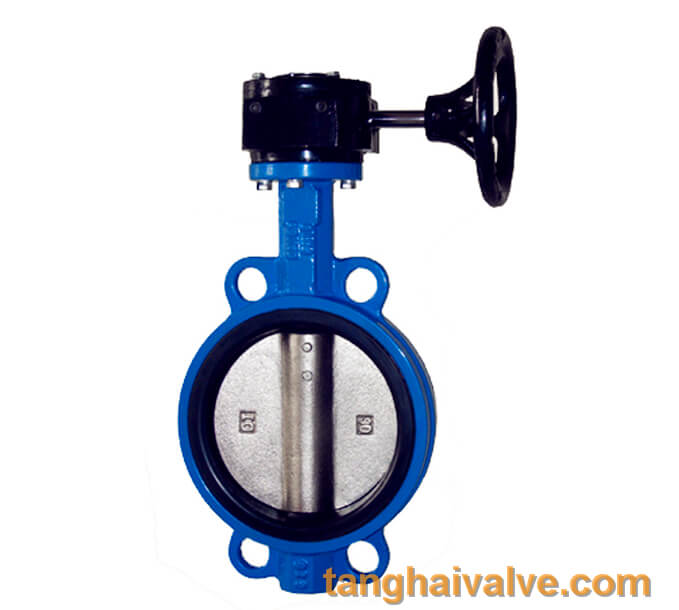Characteristics of the centerline wafer butterfly valve
The centerline wafer butterfly valve is one of the commonly used butterfly valves. It is named because of the structure of the stem axis, the center of the butterfly plate and the center of the body at the same position. The structure of the centerline butterfly valve is very simple, and the installation and maintenance are also very

Wafer type butterfly valve with worm gear
convenient. As a component that controls the on-off and flow rate of the pipeline system, the centerline clamp valve is widely used in pipeline systems in the fields of petroleum, chemical industry, hydropower station, municipal construction, water supply and drainage.
The sealing form of the centerline wafer butterfly valve is generally a soft seal, and the sealing material is rubber or polytetrafluoroethylene, so the centerline wafer butterfly valve is usually a soft sealing butterfly valve. Therefore, the advantages of this type of valve are that the seal can be replaced, the sealing performance is excellent and reliable, zero leakage can be achieved, and two-way sealing can be achieved. . However, due to the limitation of its own structural characteristics, the centerline wafer butterfly valve also has some shortcomings. Because the butterfly plate and valve seat of the valve are always in a state of squeezing and scratching, the resistance distance is large, and the wear on the butterfly plate and valve seat is very large, so In order to overcome the phenomenon of squeezing and scratching and ensure the sealing performance of the valve, the valve seat of the centerline butterfly valve adopts elastic materials such as rubber or polytetrafluoroethylene to ensure the sealing performance of the valve. However, materials such as banana and polytetrafluoroethylene are subject to temperature restrictions in use. Therefore, the disadvantage of the centerline butterfly valve is that it is not resistant to high temperatures.
The centerline wafer butterfly valve is not suitable for high temperature and high pressure working environment, has poor wear resistance and short service life. These shortcomings make the scope of application of the valve have certain limitations. In order to overcome this problem, there is now a triple eccentric metal hard seal butterfly valve, which is different from the centerline wafer butterfly valve. The stem axis of the triple eccentric butterfly valve deviates from the center of the butterfly plate and the center of the body at the same time, and the rotation axis of the valve seat and the axis of the valve body channel There is a certain angle. Compared with the centerline butterfly valve, the triple eccentric butterfly valve is more resistant to high temperature, and also has good sealing performance and longer service life.
The valve body and the valve seat are connected components, and the sealing surface layer of the valve seat is welded with temperature-resistant and corrosion-resistant alloy materials. The multi-layer soft laminated sealing ring is fixed on the valve plate. Compared with the traditional butterfly valve, this butterfly valve has high temperature resistance, light operation, no friction when opening and closing, and when closing, the torque of the transmission mechanism increases to compensate for the sealing, which improves the butterfly valve. The advantages of sealing performance and extended service life.
TH Valve is a professional manufacturer of butterfly valve, gate valve, check valve, globe valve, knife gate valve, ball valve with API, JIS, DIN standard, used in Oil, Gas, Marine industry, Water supply and drainage, fire fighting, shipbuilding, water treatment and other systems, with Nominal Diameter of DN50 to DN1200, NBR/EPDM/VITON, Certificates & Approvals: DNV-GL, Lloyds, DNV, BV, API, ABS, CCS. Standards: EN 593, API609, API6D
Related news/knowledge:
Centerline flange butterfly valve
The sealing characteristics and principle of eccentric butterfly valve
Double eccentric High performance butterfly valve (TH-BTV-DE)
What is a wafer type butterfly valve



 © Copyright 2020 Tianjin Tanghaidongyang Valve Co., Ltd. All Rights Reserved.
© Copyright 2020 Tianjin Tanghaidongyang Valve Co., Ltd. All Rights Reserved.